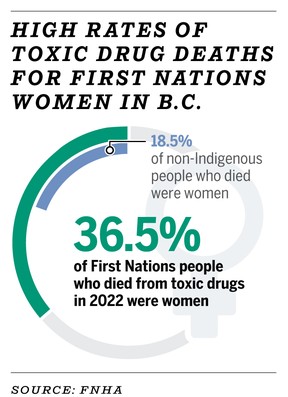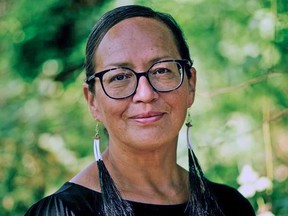First Nations Health Authority has shifted some of its opioid emphasis toward overdose prevention for women
First Nations women in B.C. are over 11 times more likely to die from toxic drugs than other women in the province, according to recently released figures from B.C.’s First Nations Health Authority.
“I’m not surprised that women, unfortunately, experienced greater harm,” said Dr. Nel Wieman, acting chief medical officer of the health authority.
“There has been extensive documentation about how Indigenous and First Nations women — both cis and trans — have been devalued and experience high rates of trauma,” Wieman said, adding that trauma is an “underlying driver” of the toxic drug crisis.

In response, the authority has shifted part of its toxic drug crisis response to First Nations women, dedicating a portion of our harm reduction funding to support those living in urban areas and away from home.
“We have heard from First Nations women that in some cases, they don’t prefer to use the harm reduction services because of safety reasons,” Wieman said, noting that women can be hit on, face racism, or just be uncomfortable using substances while surrounded by men.
Wieman highlighted the authority’s support of two women-only overdose prevention sites in Vancouver’s Downtown Eastside — including the Atira-run SisterSquare site — and a mobile overdose prevention site in Prince George that has been working to engage women.
Wieman said that while the sites are new, she has heard anecdotally that “women obviously feel more comfortable, they feel safer” at the women-only sites.
Child-custody fears are another significant barrier for First Nations women, according to Wieman. She said while working as a clinical psychiatrist she would sometimes see First Nations women decline admissions to detox or withdrawal services out of fear for their children.
Read more….





